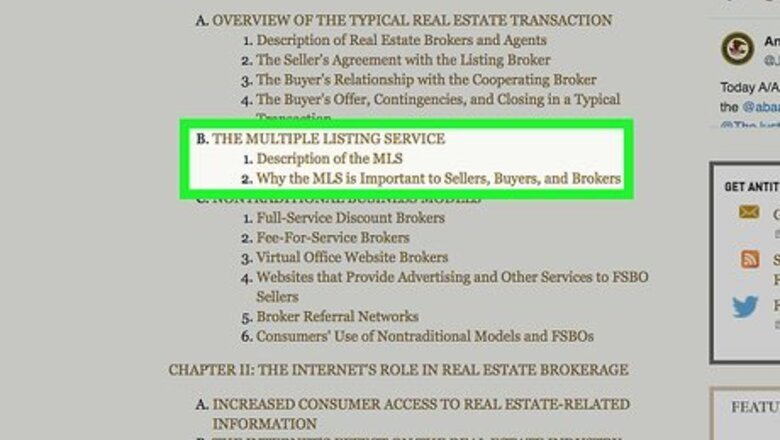
views
Picking a Company
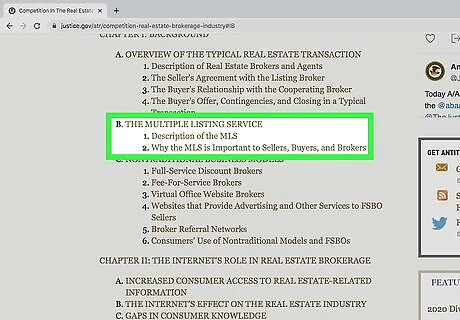
Know what the Multiple Listing Service system is. The Multiple Listing Service, or MLS, was created for brokers to share information on local listings in one place, making it easier for Realtors and buyers to find what's available in the area. When selling a house, it is extremely important to list on one of these services, as it is the main place to provide and find information on properties for sale. Therefore, if your home is not listed on an MLS system, your chances of selling your home are greatly reduced. In fact, the MLS listing is the reason that 80% of properties sell. The MLS is not one system. Rather, it is a number of databases across the country. Most of them are specific to a region or area, though a few are nationwide. This type of networking has a rich history, going back to the 19th century when brokers would meet in person to trade information on properties.
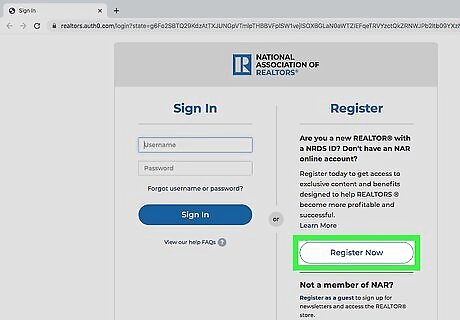
Pay a company to list for you. To list on an MLS market, you must be licensed as a real estate agent with the state. You must also join your local Realtor association, as a Realtor which extends your membership to the National Association of Realtors or a non-Realtor member. That means that, as an average home owner, you cannot simply list your home on an MLS system. Traditionally, for sale by owner (FSBO) homes were not listed on MLS systems. However, you can negotiate with a Realtor to have them list your home on the MLS for a flat fee. You will still need to pay the selling broker a commission that is separate from the listing fee. You may still pay a commission to the broker or a cooperating broker if he or she finds you a buyer. However, if you find your own buyer, you may not pay them a commission, depending on the terms of your contract. If you want to avoid paying the commission, it must be written into your contract that you will not pay a commission if you find your own buyer. Be prepared to prove that you found your buyer without help from the Realtor, including their advertisements for the property. For example, if someone sees the Realtor's sign in your yard and asks you about the property, then the Realtor is still responsible for finding that buyer. If you prefer not to pay someone, you do have a few options. You can list your house for sale on websites such as Craigslist and Zillow. You can also try advertising in your local paper and place your own "For Sale By Owner" sign in front of your house. Consider reading how to use a flat fee multiple listing service when selling by owner for more tips.
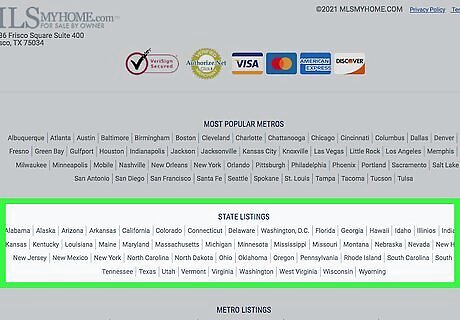
Stay local. Your largest base of potential buyers is in your area. Of course, some people may be looking out of state, but they'll still be looking at local databases. For that reason, you must be listed in a local or regional MLS database. Picking a local company, or one that at least knows the area, will help guarantee your listing is put in the correct databases so that buyers can find you.
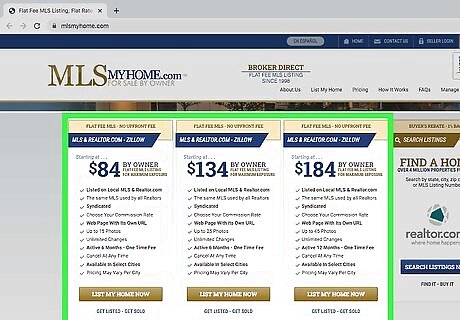
Check out the packages. Most companies offer various package levels with different benefits. Some of the packages differ by how many places you list your house. Of course, the more places you list, the more likely you are to sell. Other packages differ by how long the house is listed. Some packages start at six months, while others go up to a year. The price ranges can vary widely, so check around for the best deal. Advertising is usually one benefit you receive. You get the listing and other online advertisements. In addition, you also usually get yard signs and a lock-box for when Realtors want to show your house. Later, you may want to purchase additional services. For instance, you may at first think you'll be able to handle the negotiations and the contract. However, if you find you can't, many brokerage services will provide additional help for an added fee. If you feel like you may want to add services later, make sure you can do that with the company you choose.
Creating a Listing
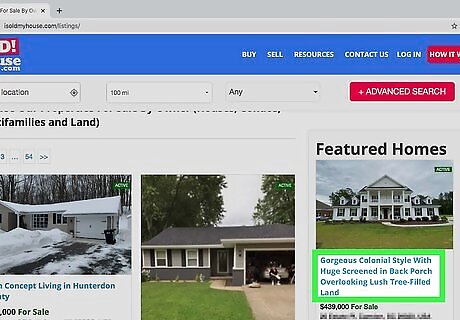
Pick a good heading. When buyers or Realtors are looking through listings, you only have a few pieces of information to draw them in, which usually includes the headline, a picture, and a price. Choose what makes your property unique, and include that in the title, such as its unique beauty or its unusual location. For instance, you could say, "Magical home in the heart of a historic neighborhood." Try to make your listing stand out as much as possible. Your first goal is to get them to click on your listing for more information. Try using capital letters, and leave your reader curious. For instance, you could say, "You WON'T BELIEVE what's behind this property." Just make sure your listing follows through with what you promise.
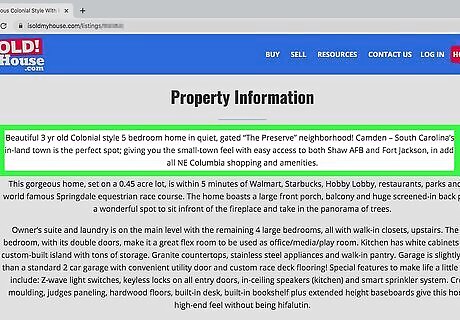
Tell a story. Your house is more than just a house. It has a story and a history. Use that to your advantage to help sell your house. Instead of just saying, "The house was built in 1910," say "This home is an historic 1910 bungalow filled with historic details, including original door handles and fixtures."
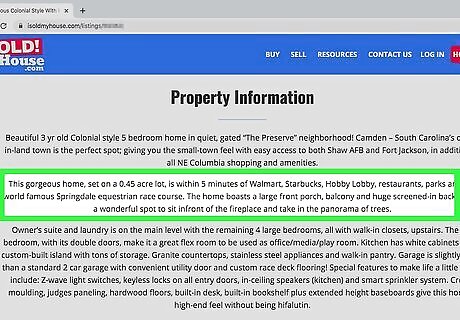
Play up the location. Most people want to move to a prime location. Of course, not everyone is looking for the same thing in location, so play up what makes your property great, whether you are in a great school system, close to a park, in the heart of downtown, or near great shopping or restaurants. Add the information into the listing, such as "Within walking distances of beautiful hiking trails" or "five minutes away from a variety of great, local cuisine and fabulous shopping."
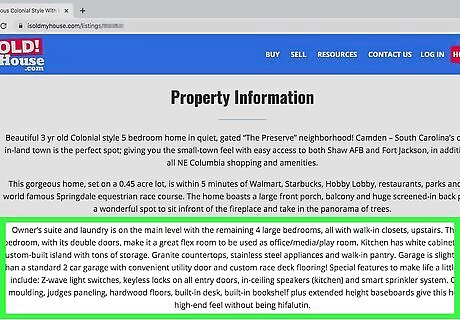
Remember to include all the relevant details. Your buyer or Realtor will want to know the square footage of the house, the size of the land, and the number of bedrooms and bathrooms. She'll also want to know about any extra rooms such as an office or two living rooms, renovations such as a new kitchen, bonuses such as garages, pools, and decks, the location, and any beautiful views you have from the house. The year the house was built is also important.
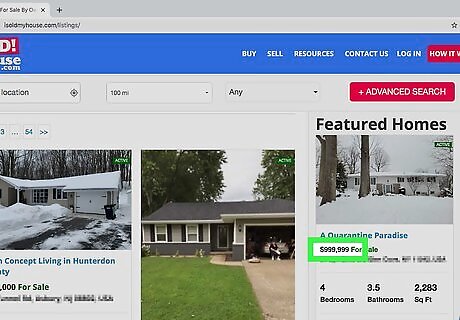
Skip the pricing gimmicks. You've seen the trick, even in local grocery ads. Your favorite cereal is listed at $2.99 rather than $3. It's a visual trick that has been proven to work, yet it can lose you potential buyers online. The reason is the way buyers search for properties; they use price ranges. So if a home is listed at $99,999, buyers who search from zero to a $100,000 will see it. However, if a buyer searches from $100,000 to $200,000, he won't see your property. Listing it at $100,000 means both sets of buyers will see it.

Don't oversell. You want to sell your house, but if you present your house as more than it is, you are just going to make people angry. Be truthful, and you'll get people to look at it and actually buy it.
Taking Photographs
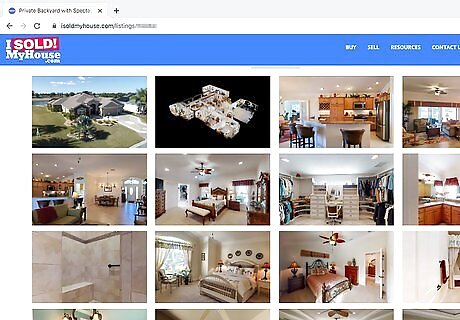
Focus on the photos. Clear, beautiful photos are a must if you want to sell someone on your house. With most listings, you get 25 photos. You may not use all of them, but you want each photo to be engaging and beautiful. Clean up your house first. Make sure everything is in its place. If you have already moved out, try a staging company. A staging company will bring in furniture for a fee so that potential customers can envision what it will look like. Usually your Realtor will take the photos of your home, but you can supply your own photos if you'd prefer. Contact your Realtor to ask the best way to provide the photos to them, such as through email or a shared drive.

Hold the camera steady. You want the clearest shots you can get. Using a tripod is ideal. However, most people don't have a tripod just hanging around the house. If you don't, try using walls and furniture to help steady yourself as you take a picture. It can also help to put the camera on a two second delay so that you're not moving the camera once the picture takes; even the action of pushing the button can move the camera around.
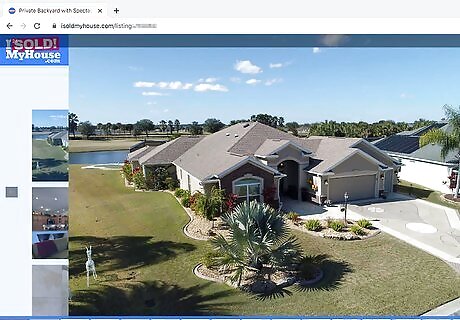
Take at least one curb shot. You'll want at least one clear one from the curb with a wide angle lens. Pick a sunny, clear day, and make sure you get all of the house. Also, take at least one shot of the backyard.
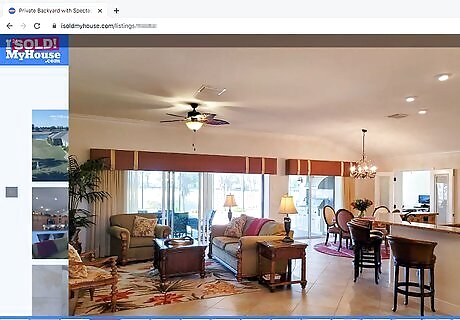
Open up the curtains to let in the light. Natural light will make for better photographs. If you can't get enough light, use a camera with a good flash. If you can't get good shots, try adjusting the photos' brightness and color saturation after you take them.
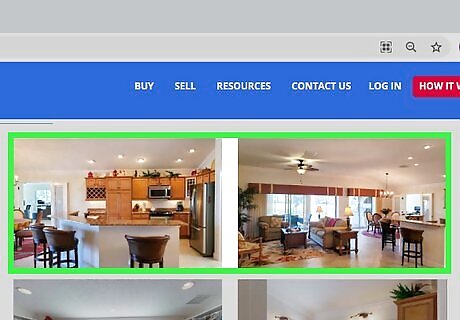
Show photos of each room from different angles. If possible, take each room from two angles. It's best to take the photos during the day when you have plenty of natural light. However, you can skip the less appealing rooms if you think they'll turn away potential buyers, such as an ugly utility room. Stick to what will get someone in the house to see it.

Show as much of the room as possible. Stand as far back as possible to get the shot. Use a wide angle lens inside, too. You want each picture to show as much as your house as possible. In each shot, place what is best about the room in the center.
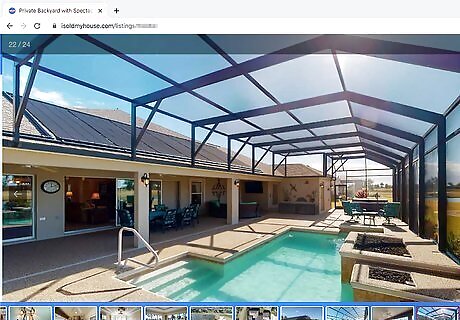
Take more shots of selling points. If you have a stellar kitchen, include multiple shots. If your living room fireplace is a masterpiece, be sure to include it in a shot. If you have a spectacular view out of your master bedroom, add a shot. Show your potential buyers what you love about your house and what they should love about it, too.


















Comments
0 comment